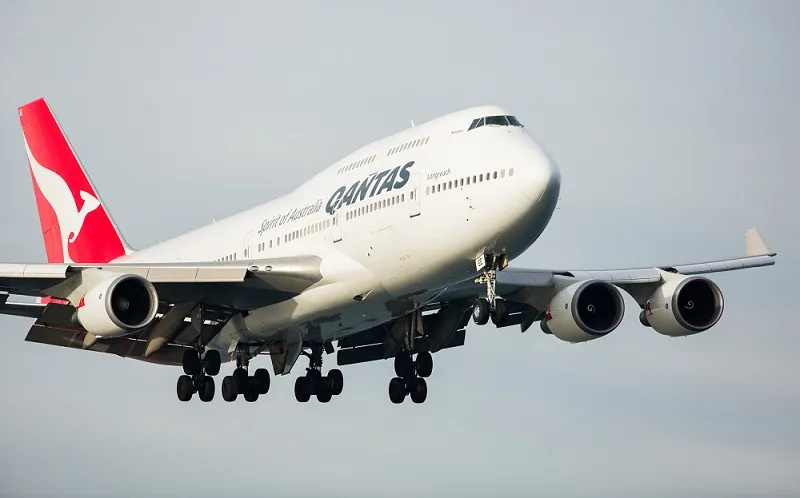
Qantas changed training after 747 upset near Hong Kong
Mar 27, 2019

After a near-accident involving a Qantas Boeing 747 during a turbulence encounter near Hong Kong, the airline reassessed its pilot training protocols. The incident highlighted the need for enhanced preparation in handling in-flight emergencies and adverse weather conditions. In response, Qantas implemented a more rigorous training program focused on situational awareness, decision-making under pressure, and crew resource management. This overhaul aimed to ensure that pilots are better equipped to respond to unexpected situations, thereby improving overall safety and operational resilience. The changes reflect Qantas' commitment to maintaining high safety standards in an increasingly complex aviation environment.
In a significant move aimed at enhancing safety and operational efficiency, Qantas has revamped its training protocols following an alarming incident involving a Boeing 747 near Hong Kong. The incident, which raised concerns about crew performance during high-stress situations, prompted the airline to reassess its training methods to ensure the highest standards of safety are maintained.
Background of the Incident
The incident occurred when a Qantas 747 experienced an upset during its approach to Hong Kong International Airport. The aircraft encountered unexpected turbulence, which led to a temporary loss of control. Fortunately, the skilled crew managed to regain control and landed safely, but the event underscored the need for improved training to handle such scenarios.
Revised Training Methods
In response to the incident, Qantas has implemented a series of revised training methods focused on enhancing crew performance under pressure. These changes are aimed at ensuring that pilots and cabin crew are better prepared to deal with unexpected challenges during flights.
Key Changes to Training Protocols
The following key changes have been made to Qantas training protocols:
| Training Aspect | Previous Approach | Revised Approach |
|---|---|---|
| Simulator Training | Standard scenarios | Incorporating high-stress and emergency simulations |
| Crew Communication | Basic communication drills | Comprehensive teamwork and communication exercises |
| Decision-Making Under Pressure | Limited focus on real-time decision-making | Enhanced focus on crisis decision-making scenarios |
| Feedback Mechanism | Post-flight debriefs | Real-time feedback during simulations |
These adjustments are designed to foster a culture of safety and preparedness at Qantas, ensuring that all crew members can react swiftly and effectively in emergencies.
Importance of Crew Resource Management
One of the central tenets of the revised training is the emphasis on Crew Resource Management (CRM). CRM is a set of training, skills, and procedures that enables flight crews to use all available resources to ensure safety and efficiency during operations. Qantas recognizes that effective communication and teamwork among crew members are critical in managing unexpected situations.
The airline's new CRM training focuses on:
- Effective communication strategies to ensure all crew members are aware of the situation.
- Encouraging open discussions about potential issues before they escalate.
- Promoting a culture of mutual respect and support among crew members.
Use of Advanced Technology in Training
Qantas has also embraced advanced technology to enhance its training programs. The use of virtual reality (VR) and augmented reality (AR) in simulations is becoming increasingly popular, allowing crew members to practice in a controlled environment that closely mimics real-life scenarios.
Some benefits of using advanced technology in training include:
- Immersive experiences that promote better retention of skills and knowledge.
- Realistic scenarios that can be tailored to specific situations, such as turbulence or system failures.
- Immediate feedback and performance analytics to identify areas for improvement.
Impact on Safety and Performance
The changes implemented by Qantas are expected to have a significant impact on the overall safety and performance of the airline. Enhanced training methods not only prepare crew members for handling emergencies but also contribute to a more confident and competent workforce.
Qantas aims to set a benchmark in the aviation industry for safety training and operational excellence. By focusing on continuous improvement and adapting to the lessons learned from the 747 incident, the airline is committed to providing a safe and reliable flying experience for its passengers.
Conclusion
In conclusion, the decision to change training protocols at Qantas following the 747 upset near Hong Kong illustrates the airline's commitment to safety and operational excellence. By incorporating cutting-edge training techniques, focusing on crew resource management, and utilizing new technologies, Qantas is well-positioned to enhance its safety standards and ensure that its crew is prepared for any situation that may arise during flights.
As the airline industry continues to evolve, Qantas remains dedicated to learning from past experiences and implementing best practices to safeguard the well-being of its passengers and crew members. Through these initiatives, Qantas is not only addressing immediate concerns but also paving the way for a safer future in aviation.
Related Articles

Explore Thailand: The Best Islands to Visit for Paradise, Adventure, and Relaxation

The Ultimate Guide to the Best Islands in Thailand for Your Next Getaway

Do babies need passports? How to get a passport for a newborn

How to get a U.S. passport fast: here’s how to expedite the process

What is Mobile Passport Control: 5 reasons why you should use it

SENTRI vs. Global Entry: A detailed guide

Do you need a passport to go to the Bahamas? Let’s find out

Do you need a passport to go to Mexico? A detailed guide

Do you need a passport to go to Canada? We got the answer

Do You Need a Passport for a Cruise: An Essential Travel Guide

Booster Seat Requirements: All the Rules to Follow in Your Rental Car

What Are the World’s Most Powerful Passports, and How Does Yours Rank?

How to Take a Passport Photo at Home: A Helpful Guide

You've got to have heart! Southwest's new livery

Your opinion: Should water be free on low cost carriers?

Young women bolder than guys as solo travellers
